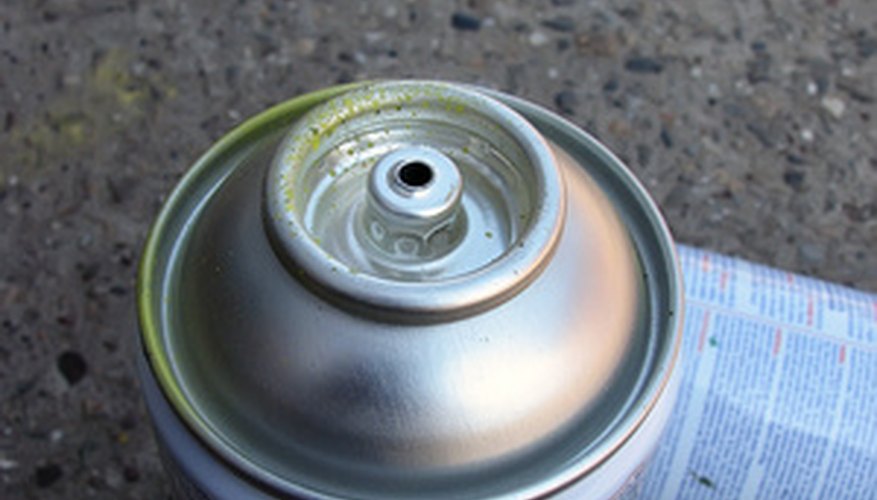In recent years, spray paints have been developed for use on plastics. Before this development, the finish on spray-painted plastics would crack, chip and peel. When combined with proper sanding and painting primer, plastic spray paints can last for years after application. Although most plastic spray paints come with a glossy finish, they can also be purchased in a matt or eggshell finish. Learning how to paint plastic with spray paint helps you to get started with this project.
- In recent years, spray paints have been developed for use on plastics.
- When combined with proper sanding and painting primer, plastic spray paints can last for years after application.
Mix a small amount of dish detergent in a bucket of warm water. Use the water and a soft rag to clean the surface of the plastic. Rinse the plastic with clean water. Dry the plastic with a clean cloth.
Sand the plastic lightly with fine grit sandpaper. Use 220-grit sandpaper to lightly scuff the surface of the plastic. Do not oversand the plastic. Wipe away the sanding dust from the plastic with a damp rag. Let the plastic dry completely.
- Sand the plastic lightly with fine grit sandpaper.
- Wipe away the sanding dust from the plastic with a damp rag.
Place the plastic on a dust sheet. Work in a ventilated area.
Prime the plastic with a spray paint primer. Hold the can 12 inches above the plastic and apply the primer in a thin layer. Permit the primer to dry per manufacturer directions.
Choose a colour and an eggshell or matt finish in a spray paint designed for plastic.
Hold the spray paint can 12 inches above the plastic. Lightly coat the plastic with the paint. Apply three to five thin layers of paint on the plastic. Allow each layer to dry completely before applying the next layer. Painting the plastic in thin layers helps to prevent paint streaks in the finished product. Let the final layer of paint dry for three days before heavy use.
- Prime the plastic with a spray paint primer.
- Hold the spray paint can 12 inches above the plastic.
